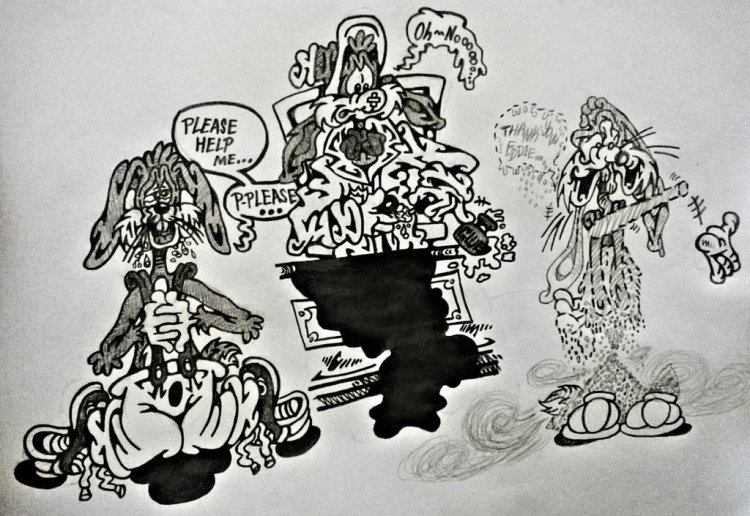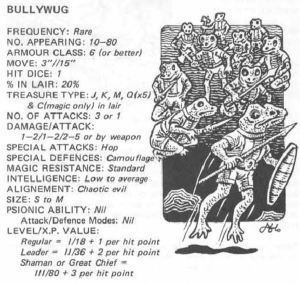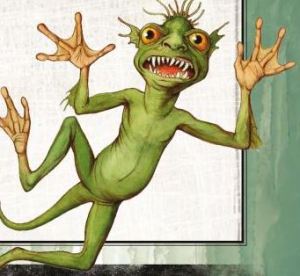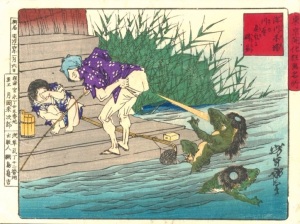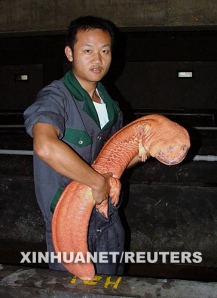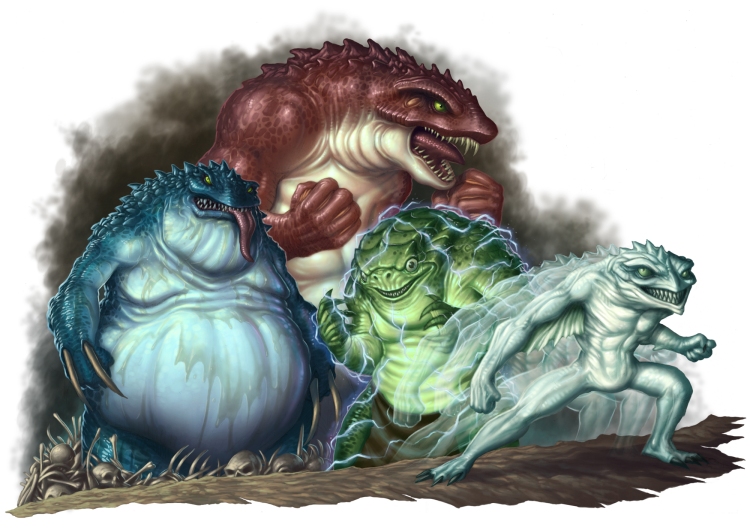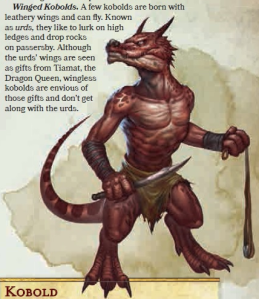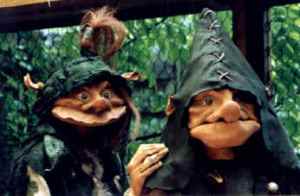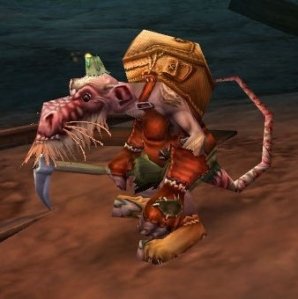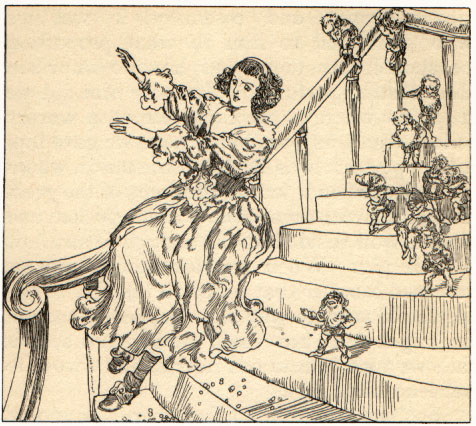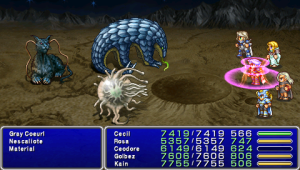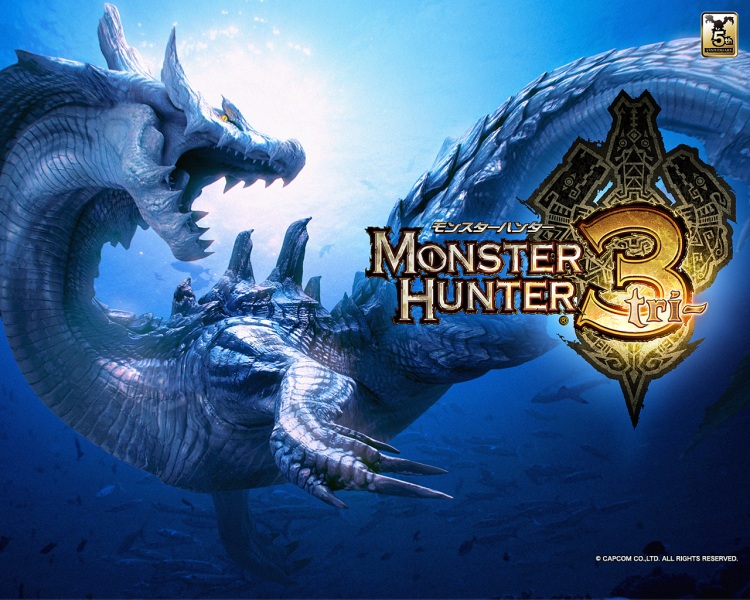“As her eyes begin to close, blood flowing from the massive gash in her head and the wound in her shoulder, she meets your eye and utters her final words. ‘I’m sorry.’ You have no idea what she is apologizing for. And then her form seems to turn to wax, like a melting candle. It elongates and shrivels, her facial features melt away, leaving a gaunt, emaciated purple-skinned humanoid. She was a doppelgänger. And she died protecting you. But why.” – From The Angry DM’s Living City campaign as explained (briefly) below
The doppelganger (or the doppleganger, if you were playing between 1977 and 1983 and your edition of D&D didn’t have “Advanced” in the name) is one of those monsters that has been included in D&D from the very beginning. It first appeared in the Greyhawk supplement by E. Gary Gygax back in 1975 and it has since appeared in every edition of D&D, though it had to wait until the second Monstrous Compendium in AD&D 2E before it got any love. And in Basic D&D, it’s name was mispelled.
In D&D, the doppelganger is a shapeshifting humanoid with limited mind-reading abilities. The DG would kill someone, transform into an exact duplicate of them, and then take over their life. And it would read the minds of friends and family to pull off the trick. In some editions, it would actually eat the brain of the victim and absorb their memories. And different variants like the greater and dread doppelgangers appeared in various supplements and settings with different powers of mimicry. But they all do the same thing.
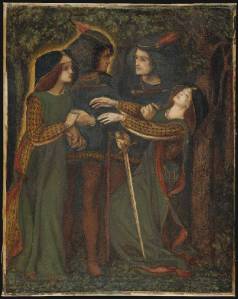
“How They Met Themselves” – Dante Gabriel Rossetti; every article about doppelgangers MUST include this painting. Trust me, I researched it. Every. Single. One.
And that leads us to the doppelgänger (note the fancy umlaut), which is a German that means “double walker.” While the word is of fairly recent origin, the idea is a bit older. In various European mythologies, the doppelgänger is a ghostly double of a person, an identical apparition. According to legend, when someone sees your doppelgänger, it is a bad omen. If you see your own doppelgänger, you’re going to die. And there are famous accounts of doppelgänger sightings in history. Abraham Lincoln once reported seeing his doppelgänger in the mirror. And you might just assume that our 16th president just didn’t know how mirrors work, but he saw a double of himself standing behind him in the mirror. So there were two of him in the mirror, okay? At least, that’s what he said.
In most doppelgänger stories, the doppelgänger is just hanging around, doing people things and acting normally. Most of them are just about people seeing someone they know and then later discovering the person couldn’t possibly have been there or else discovering the person was dead. But some stories ascribe more sinister acts to the doppelgänger. Doppelgängers have been accused of providing malicious advice or corrupting people in the guise of a friend or confident or even given bad advice to their own duplicates. The doppelgängers are occasionally recognized because they cast no shadows.
But let’s talk about a doppelgänger almost no one knows about. Let’s talk about Roger Rabbit’s doppelgänger. Yeah, you heard me right. Remember the 1988 movie Who Framed Roger Rabbit, about a hard-boiled detective in 1940’s Hollywood trying to prove that cartoon star Roger Rabbit is innocent of the murder of Marvin Acme? The one that was famous for the way it melded live action actors and cartoon characters so seemlessly that Bob Hoskins was allegedly institutionalized for a month after filming ended to help him stop talking to people that weren’t there? Well, before it was a movie, it was actually a book. The book, Who Censored Roger Rabbit, involved Eddie Valiant trying to solve the mystery of who murdered comic strip star Roger Rabbit, teaming up with his widow, Jessica, former co-star Baby Herman, and also Roger Rabbit himself. See, in the book – which, incidentally took place before the invention of animated cartoons and was therefore about comic strip models and had cameos by Dick Tracy and Beatle Bailey – in the book, the toons could generate doppelgängers of themselves. Short lived, ghostly phantoms that looked just like them and could perform dangerous stunt work. Roger was very good at making a doppelgänger and his lasted for several days AFTER he died. I s$&% you not. This was a major plot point in the book. And it was never really explained.
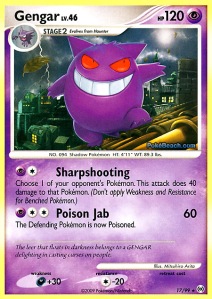
“I tap my swamp to play gengar in face-down defense mode!” – What every trading card game sounds like to me
But if Roger Rabbit isn’t your thing because you were a zygote when that movie came out and thus you’re making me feel old, let’s talk about a more modern -gänger. How about a Gengar? That’s right, I’ve hit rock bottom. I’m referencing Pokémon (not the accent). So, Gengar is a ghost-type pokemon which basically looks like a shadowy vaguely humanoid cartoon thing. If you aren’t familiar with Pokémon, it is a giant, all consuming franchise encompassing multiple video games, animated series’ (anime), movies, comic books (manga), a trading card game, lunchboxes, toys, and pretty much every other goddamned thing you might sell to a child. In the Pokeverse (a word I sword I would never say), children travel the world capturing strange creatures called Pokemon and forcing them to fight in vicious battles for their own entertainment. Obviously, since it’s basically fantasy cock-fighting for children, people get very upset about how the series sometimes mentions the word evolution, misusing the word so badly that Charles Darwin’s ghostly form is going to rise from the dead someday and beat series creator Satoshi Taijiri unconscious with a copy of “On The Origin Species by Means of Natural Selection; Or the Preservation of Favored Species in the Struggle for Life” (yes, THAT is the full title, I s$&% you not).
Speaking of ghosts named gengar and vengeful spirits rising from the grave, it’s actually interesting to note that Gengar might not be named after the doppelgänger after all, despite the fact that he likes to imitate people’s shadows and follow them around. In fact, Gengar is probably a reference to the gjenganger. What’s a gjenganger? Well, it’s actually a Norse spirit which we might call a revenant. The gjenganger was a restless spirit that rose from it’s grave for some reason and took on bodily form. The Vikings called them draugr which you might recognize if you played Bethesda’s massive productivity black hole, Skyrim. There are lots of legends about the gjenganger and the draugr, which, by the way were mortal and physical and could be killed with swords because in Viking stories, everything worth talking about could be killed with swords. Lots of superstitious rites existed about how to keep the dead dead. But what’s more interesting about the gjenganger is how they came about. It was said that gjenganger were spirits that could not find rest in the afterlife because of the way they died. Murder victims couldn’t sleep peacefully, nor could those who committed suicide, but most interestingly, neither could those who were guilty of murder.
And that brings us around to how you can use doppelgänger and gjenganger and revenants and other such things in your D&D game. In an interesting way. I mean, the “doppelgänger tries to replace one of the heroes” thing has been done to death, right? As has the “oh no, the king is really a doppelgänger” plot. You’ve got to mix this stuff up a bit. For example, once upon a time, the party in my campaign befriended someone who became an ally and romantic interest and then, by accident, she got killed and the party discovered she had been a doppelgänger. Some time later, they discovered the original person was not dead because they rescued her from an enemy stronghold. But it turned out, she had been replaced BEFORE she met the party, so the original real person was less real to them than her doppelgänger. And they never found out what the doppelgänger had been up to. I’m just saying, if you want to pull off a doppelgänger, you have to work at it.
Likewise, the whole “spirit trying to solve it’s own murder” thing like Roger Rabbit and the gjenganger is neat, but also overdone. I’m actually more interested in the ghost of the murderer who can’t rest. Imagine a plot line where a ghost lies to convince the party to help him find the ghost of someone else lost somewhere in the world. In the end, they discover the ghost is a murderer, hunting his own victim’s ghost, trying to make amends so that both can move on to the afterlife. THAT’S a twist.



